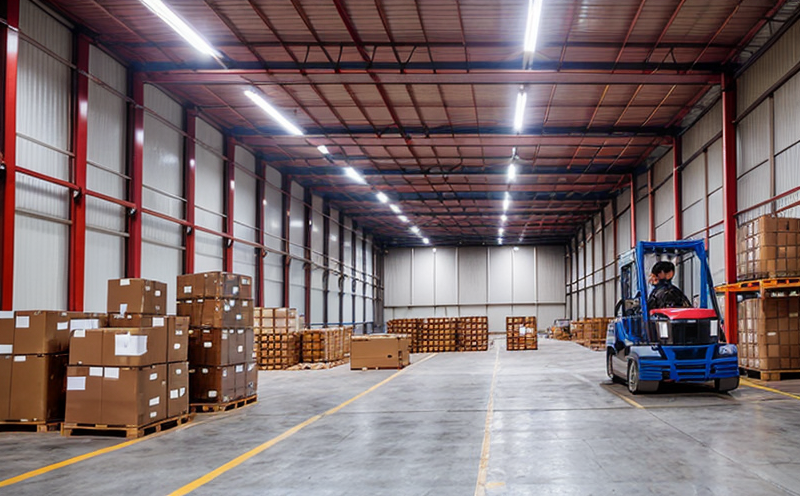EN 22874 Package Transport Vibration Testing
The European Standard EN 22874 specifies the method of testing packages used in transport to ensure their structural integrity and resistance against vibrations encountered during transit. This standard is essential for ensuring that packaging materials, including cartons, pallets, and crates, can withstand the rigors of transportation without compromising product safety or quality.
When designing packaging for industrial manufacturing processes, it's crucial to consider how the package will behave under real-world conditions. Vibration testing helps manufacturers identify potential weaknesses in their designs before products reach the market. By simulating actual transport scenarios using this standard, companies can verify that their packages meet regulatory requirements and provide protection against damage.
The test procedure outlined in EN 22874 involves subjecting samples to controlled vibrations using shakers or other suitable equipment capable of generating specific frequency bands relevant to various modes of transportation (e.g., road, rail, air). The intensity and duration of these vibrations are carefully calibrated based on expected environmental factors such as acceleration levels and time spent in transit.
Accurate specimen preparation is critical for obtaining reliable results from EN 22874 testing. Before placing the package onto the shaker platform, it should be loaded according to its intended use. For instance, if the package contains fragile goods like electronics or glassware, appropriate cushioning materials must be included inside. Similarly, any external labels or identifiers must remain attached unless specified otherwise in the test procedure.
Once prepared, the sample is secured on the shaker table and subjected to a series of vibration cycles designed to mimic typical transport conditions. During testing, engineers closely monitor parameters such as peak accelerations, frequency ranges, and accumulated displacement experienced by the package during transit. After completing all prescribed cycles, visual inspections are conducted to assess any visible damage or deformities.
Following inspection, additional destructive tests may be performed if necessary to determine whether internal contents have been compromised due to excessive forces applied during transport. Any deviations from acceptable limits indicate areas where improvements need to be made in future iterations of the design process.
The results of EN 22874 testing provide valuable insights into how well a particular package performs under specified conditions, allowing manufacturers to make informed decisions about material selection, structural modifications, and overall packaging strategies. Compliance with this standard ensures that products meet both internal quality control standards as well as external regulatory requirements imposed by government agencies worldwide.
| Industry Sector | Application |
|---|---|
| Automotive Manufacturing | Vibration testing of shipping containers for components like engines or transmissions. |
| Pharmaceuticals | Evaluating packaging used to transport temperature-sensitive medications. |
| Electronics Manufacturing | Testing packages for fragile circuit boards or semiconductors during shipment. |
| Petrochemicals | Assessing the durability of drums and tanks used to store volatile liquids. |
Benefits
- Identifies potential weaknesses in package design early in the development cycle.
- Promotes compliance with international standards and regulatory requirements.
- Reduces costs associated with product recalls or warranty claims resulting from damaged goods.
- Enhances brand reputation by ensuring consistent quality across all shipments.
Industry Applications
- Vibration testing of packages used in automotive manufacturing for components such as engines or transmissions.
- Evaluation of packaging materials employed to transport temperature-sensitive pharmaceuticals and biologics.
- Destructive testing of electronics packages containing fragile circuit boards or semiconductors during shipment.
- Assessment of the durability of drums and tanks used in petrochemical processing for volatile liquid storage.
Environmental and Sustainability Contributions
Compliance with EN 22874 helps reduce waste by minimizing the likelihood of package failure during transit, which could lead to product damage. This, in turn, reduces the need for replacement orders or returns, thereby lowering overall environmental impact.
Better-packaged goods also contribute positively towards reducing carbon footprints associated with transportation since fewer resources are required to replace lost items. Additionally, by preventing contamination of products during transit, companies can avoid costly clean-up efforts and potential health risks.





